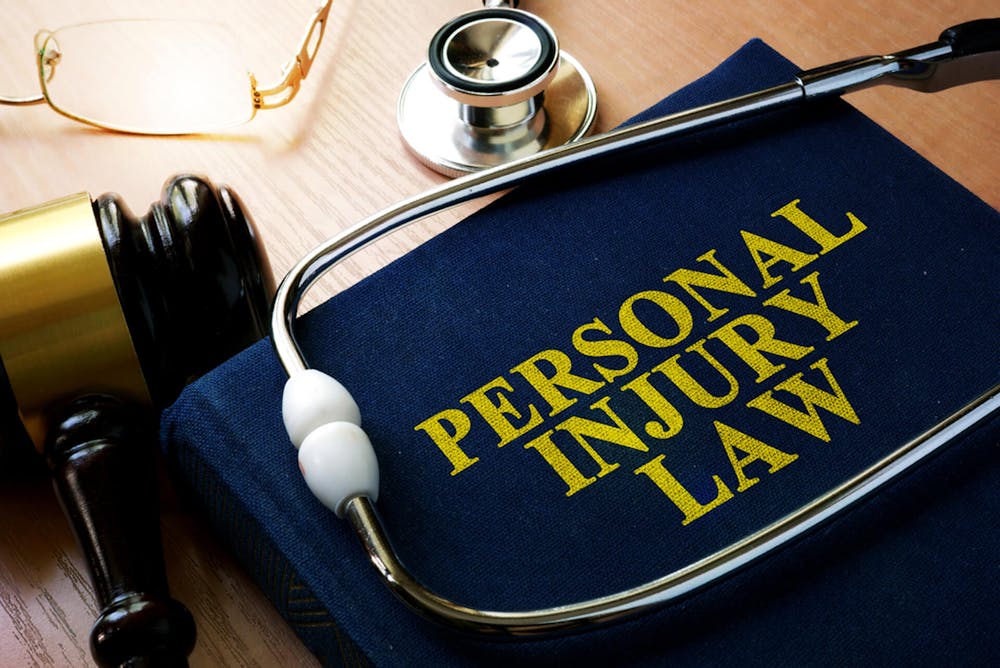
Every year, millions of people fly from Hartsfield-Jackson Atlanta International Airport (ATL) and other Georgia airports to destinations both near and far. Air travel is statistically very safe, but accidents and injuries can still occur onboard.
In fact, according to recent statistics, there are thousands of reported in-flight injuries annually, ranging from minor discomfort to more serious incidents. The National Transportation Safety Board states that 163 people were seriously injured from in-flight turbulence between 2009 and 2022. This is only the beginning.
Have you been injured on an airplane flight recently? If so, understanding your rights in this situation is not just a good idea but crucial to moving forward. Knowing what to do and who can help you do it can make the difference between a smooth resolution and a “turbulent” situation.
The Reality of In-Flight Injuries
In-flight injuries can occur for a variety of reasons. Injuries can range from minor discomfort to more serious incidents that require time off work and hefty medical bills.
Turbulence-Related Injuries
Turbulence is a common cause of in-flight injuries. It can lead to passengers being thrown from their seats, hitting their heads on overhead compartments, or experiencing motion sickness, just to name a few. Turbulence-related injuries could be bruises, minor cuts, or sprains. Severe turbulence-related injuries are rarer but do happen, like fractures, head injuries, or more serious sprains and strains.
An example occurred in December 2022. Around two dozen passengers were injured on a Hawaiian Airlines flight from Phoenix to Honolulu after the plane experienced severe turbulence just before landing. Twelve of the flight’s passengers are now suing, saying that the pilots should have anticipated rough air and instructed passengers to remain buckled in their seats, which they did not.
Luggage Accidents
Overhead compartments can sometimes drop items on passengers, either during turbulence or when passengers open them after the flight. Luggage-related injuries often involve minor bruises, cuts, or minor head injuries.
Slips and Falls
You may think of a slip and fall incident happening in a grocery store, but airline passengers can slip and fall in the cabin, especially when walking in narrow aisles or using the bathroom during turbulence. These injuries can vary in severity from minor bruises and sprains to more serious fractures or head injuries.
Food and Beverage Service-Related Injuries
Injuries can occur when flight attendants are serving food or beverages. Such injuries typically include burns from hot liquids, like coffee or tea.
Immediate Steps to Take After an Injury on an Airline Flight
If you’re injured on your airline flights, the first thing you should do is seek medical assistance from the cabin crew. Don’t wait until you’re off the flight to tell someone about the issues. As soon as you can, preferably while still on the flight, document the injury, the surrounding area, and any potential causes. If anyone saw the injury happen, like the passenger next to you, get their contact information as a potential witness.
Understanding Airline Liability
The Warsaw Convention and the Montreal Convention are international treaties that govern the liability of airlines in cases of injury, death, or loss of baggage during international air travel.
Warsaw Convention (1929)
The Warsaw Convention was the first international treaty to address airline liability. It established a limited liability regime for airlines in cases of death, injury, or loss of baggage during international flights. Under the Warsaw Convention, the liability of the airline is limited to 250 gold francs per kilogram of checked baggage and 125,000 gold francs per passenger in cases of injury or death.
Montreal Convention (1999)
Clearly, the Warsaw Convention needed a major update. The Montreal Convention did this. The Montreal Convention significantly increased the liability limits for airlines and set the liability at 1,131 Special Drawing Rights (SDRs) per passenger for injury or death. As well, the liability limit for baggage loss or damage is 1,131 SDRs per passenger.
One of the key features of the Montreal Convention is that it introduced a system of strict liability. The Montreal Convention presumes the airline’s liability unless they can prove that the injury or death was not due to their negligence or was solely the result of the passenger’s own actions. Airlines are liable for proven damages up to the specified limits, and they can no longer escape liability as easily as they could before.
Jurisdictional Issues
When someone is injured on a flight, several jurisdictional and legal issues can arise. This is especially true for international flights leaving from Hartsfield-Jackson Atlanta International Airport. These issues can become complex, so it’s essential to understand where to file a claim and the special considerations for international flights.
Jurisdiction and Venue
Determining which court has jurisdiction over a passenger’s injury claim can be challenging, as multiple jurisdictions are often involved. Most often, an injured passenger should file a claim in the country where the airline is based or where the flight took off, landed, or had a significant connection. This is often referred to as the “place of departure” or “place of destination.” If your flight departed from or arrived in Georgia, the state of Georgia is where you should file your personal injury claim.
Choice of Forum Clauses
An airline ticket is a contract. Some airline tickets may include choice of forum clauses, which specify where and under which laws any disputes must be resolved. Injured passengers should review their ticket to better understand these clauses, or have a Georgia personal injury attorney do so for them.

Medical Treatment
Whether it’s turbulence-related jolts, mishaps with someone’s carry-on bag falling on their head, or slipping on a spill in the narrow aisle, being injured on an airplane is a possibility that every airline traveler should be prepared for.
If you are injured on your flight, the importance of post-flight medical evaluation cannot be overstated. If you don’t get medical attention, and soon after your flight, this will greatly hurt your chance for bringing forth a successful personal injury claim. You can bet the airline has a serious team of lawyers on their side, and they’ll say you couldn’t possibly have been very hurt if you didn’t see a doctor. This is why keeping records and documentation of all medical treatment received is so important for your eventual compensation.
Reporting and Documentation
Speaking of your documentation best practices, here’s what you need to know in order to ensure you’ve crossed all your T’s and dotted all of your I’s.
Step #1 Notify Airline Personnel. Immediately inform a flight attendant or another member of the airline staff about the incident while still on the plane. They can provide initial assistance and documentation. This will most likely involve filling out an accident report of some kind.
Step #2 Complete an Incident Report. When talking to the airline staff member about your accident or incident, ask for an incident report. Fill it out with details of your injury, including what happened, who saw it, how you feel afterwards, and your contact information.
Step #3 Ask for a Copy. Keep a personal copy of all relevant documents related to your injury, including the incident report, photos, witness statements, and your boarding pass.
Step #4 Contact Customer Service. After disembarking the plane, contact the airline’s customer service department to report the incident in writing. You can do so either in person at the desk at the airport or not in person by phone, email, or through the airline’s website. Provide them with all relevant information and documentation, and be sure to put the accident in writing.
Insurance Considerations
Your travel insurance should include medical expenses as well as cover additional expenses for getting you home if you’re injured on the flight. To make a claim for an injury on travel insurance, follow these steps:
Step #1 Contact Your Insurer. As soon as you’re able to, notify your travel insurance provider. Your policy documents will give you the insurer’s contact information.
Step #2 Provide Your Documentation. If you followed the on-board instructions above, you should have quite a few pieces of documentation to prove your injury. Now, gather all relevant documents, such as medical records, police reports (if applicable), receipts for medical expenses, and proof of travel. Be prepared to provide these as this stage of the process.
Step #3 Complete Claim Forms. Your insurance company will at this point give you more documentation regarding the injury, treatment received, and expenses incurred. Fill out the necessary claim forms provided and be sure to provide accurate and detailed information.
Step #4 Submit Your Claim. Lastly, you’re able to submit your claim forms and supporting documents to the insurer.
Legal Steps to Consider
If you’re reading this and feeling like this is a pretty complicated process, you’re not alone. Just because you feel it is obvious who is at fault for your injury doesn’t mean you’ll be handed a compensation check. A Georgia personal injury lawyer will ensure you get what you deserve. If the incident involves serious injuries or significant issues, it is highly advisable to get legal advice to protect your rights and interests.
Compensation and Claims
If you are injured on an airline flight, the types of compensation you might be eligible for can vary depending on the nature and severity of your injuries, as well as the circumstances of the incident. A Georgia personal injury attorney can give you a more detailed answered based on his or her review of your case, but a few things to be aware of are:
Medical Expenses: The airline is quite possibly responsible for covering your reasonable and necessary medical expenses resulting from the injury. This includes hospital bills, doctor’s fees, medication, and physical therapy costs.
Lost Income: If your on-flight injury caused you to miss work or incur a loss of income, you could be eligible for compensation for your lost wages or earning capacity.
Disability or Impairment: If the injury results in a permanent disability or impairment that affects your quality of life or ability to work, you could be entitled to substantial compensation.
Out-of-Pocket Expenses: You may also be eligible for reimbursement of out-of-pocket expenses related to the injury. This could include any related travel costs for medical treatment, like hotel accommodations near a specialist.
The claims process typically does take some time, anywhere from weeks to months to years. Be patient while your lawyer and any insurance companies involved assess your claim. In order to move it along as quickly as possible, make sure you meet any deadlines specified in your insurance policy or laid out in the statute of limitations in the jurisdiction you file a personal injury claim in.

Contact a Georgia Personal Injury Attorney to Move Your Case Forward
If you’re injured on an airplane, whether coming in or out of a Georgia airport, contact our team of personal injury lawyers. Don’t delay in doing so. In Georgia, you have two years from the date of the injury to file a lawsuit seeking compensation. Yet, waiting isn’t a good idea. As weeks and months go by, witnesses will forget what they saw and documentation can be lost. Contact us right away and let us discuss the details of your case.

